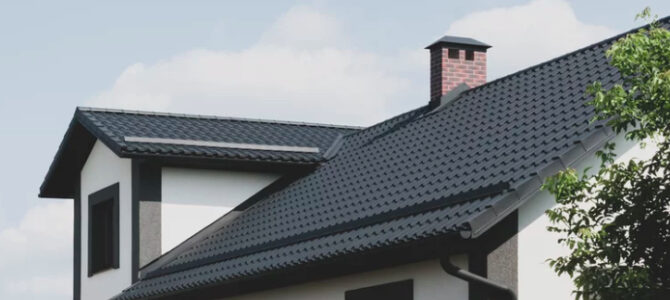Your roof is one of the most important parts of your home, protecting it from snow, rain, and wind. Damaged roofs require repairs to maintain the integrity of your home and avoid costly damages in the future. It also helps to improve your home’s curb appeal and boost its value if you decide to sell it. Getting your roof repaired by Round Rock Roofer as soon as you notice any damage is essential.
Identifying the Problem
 Your roof protects your home and everything in it. Without it, you’d be exposed to rain, wind, hail, insects, and other hazards that can quickly ruin your home. Whether your roof is brand new or well past its prime, it can sustain damage during storms and other environmental events that can leave you with costly repairs. That’s why it’s important to stay on top of your roof maintenance and repairs to keep it in good condition.
Your roof protects your home and everything in it. Without it, you’d be exposed to rain, wind, hail, insects, and other hazards that can quickly ruin your home. Whether your roof is brand new or well past its prime, it can sustain damage during storms and other environmental events that can leave you with costly repairs. That’s why it’s important to stay on top of your roof maintenance and repairs to keep it in good condition.
Your roofing contractor will be able to inspect your roof to find any issues that need repair. The first step is to identify the problem, which can be done by looking at the roof from the ground or stepping inside the attic. Look for a variety of problems, including cracks in the roof, dark stains on the ceiling, or moss growth.
A cracked roof can be repaired by using roof sealant or replacing shingles, depending on the extent of the cracks. A shingle is a small piece of material that covers the surface of the roof and protects it from the elements. When a shingle is damaged, it can allow water to penetrate the roof and cause further damage. Oftentimes, a single shingle can be easily replaced, but if you have many that need attention, a full replacement may be necessary.
Another common roof issue is a leak. Leaks can be hard to detect, but if there is one, it’s important to act fast to minimize the impact on your home and prevent mold growth and wood rot. If you suspect a leak, visit your attic on a sunny day and see if you can spot any light shining through the roof. If you can, you’ll likely have a leaky roof that needs to be repaired by a professional.
If you notice a dark stain on your ceiling, that’s a clear sign of leakage. It’s also important to visit the attic and check for wet insulation or stained areas on the sheathing or rafters. These are signs that the leak has reached the underlayment and can cause structural problems for your home.
Identifying the Cause
A well-maintained roof is one of the most important aspects of your property. Not only does it protect your assets, but also your tenants and their possessions. If you’re experiencing a problem with your roof, it’s important to know what the cause is so you can take steps to repair the damage.
The most common issue that people experience with their roofs is leaks. These can be caused by a variety of things, including weather and general wear and tear. It’s a good idea to contact an expert roofing company in Los Angeles as soon as you notice any signs of leaks. This will help to prevent any further damage and potentially save you a lot of money in the long run.
Strong winds are another common cause of roof damage. This is because they can rip off parts of, or even the whole, roof. If you live in an area that is prone to storms, it’s a good idea to check your roof on a regular basis to ensure that shingles haven’t blown off and flashings are intact.
Changing the gutters on your roof is also an effective way to prevent damage. A clogged gutter can cause water to pool on the roof in certain areas, causing rot and other problems. This is particularly a problem in autumn or spring, when the gutters are more likely to become clogged with leaves.
Another common cause of leaks is damage to the flashing on the roof. This is the metal that surrounds valleys and any spot where a roof meets a vertical surface, such as walls or dormers. If the flashing is damaged or dislodged, it can allow rainwater to seep inside and damage your home’s interior.
If you notice any issues with the flashing on your roof, it’s important to get it repaired as soon as possible. Leaving it unattended can lead to serious structural damage to your home.
You should also check for any water stains on the ceilings of your property. These could be a sign of a leak in the roof, and should be dealt with immediately.
Identifying the Solution
Once the facilities manager or owner knows the scope and source of the problem, it is easier to develop a solution that is safe for employees, workers, equipment and inventory, as well as in-line with the building’s needs and budget. For example, if the entire roof has serious issues like cracked and missing shingles or sheathing that has been exposed to the elements for too long, it might make sense to consider a full replacement rather than repair. But if the problems are confined to just one area of the roof or are limited in scope, repairs may be enough. Tracking down the leak can be as simple as soaking the affected drywall with a hose to see where moisture is collecting, or it might require removing a section of the drywall to examine the sheathing and insulation.
Choosing a Roofing Contractor
A roof is one of the most significant exterior building components. It is also one of the few that is largely built on-site, and completely reliant upon proper application for long-term success. Considering these facts, it is important to choose a qualified and experienced roofing contractor for your roofing project. Once you have a short list of potential candidates, invite them to visit your home and scope out the job site. During this meeting, it is important to discuss roofing materials and the extent of the work needed for completion. Once the field is narrowed, request a written estimate for the entire job. This should include a price breakdown, material options, labor, clean-up methods, and an estimated timeline. Make sure that the contract specifies safety procedures, workers’ compensation, and a lien waiver if applicable.
While it may be tempting to hire a low-priced roofing contractor, this could mean that the job is not done correctly, or that quality materials are used. This will result in future repairs and potentially more costly replacements. It is generally best to choose a roofing contractor that specializes in residential work. This way, they will be familiar with the typical conditions and requirements for a safe and durable residential roof.
Once you have chosen a roofing contractor, be sure to check the company’s licensing accreditation and insurance coverage. A reputable contractor will be more than happy to provide you with this information. Additionally, it is important to work with a local company. This supports the community, and it will help ensure that the roofing company is around for any warranty claims or issues that might arise.
Keeping your roof in good condition will not only protect your home, it will increase its value. If you are considering selling your home in the near future, it will be much easier to attract buyers with a new and improved roof. Fortunately, most homeowners will find that a repair is far less costly than a replacement. It is always best to err on the side of caution and to have an expert assess your roof before damage becomes widespread.


